Chest Pain
Overview
Chest pain is a symptom with various possible causes, ranging from mild to life-threatening. It can originate from the heart (e.g., heart attack, angina), lungs (e.g., pulmonary embolism), muscles, ribs, or digestive system (e.g., acid reflux).
A variety of factors can cause chest pain. The two most potentially lethal causes are the cardiovascular system and the lungs. Therefore, seeking medical assistance is crucial for a precise diagnosis. Call 911 or your local emergency number immediately if you believe that your chest pain is the result of a heart attack.
Chest pain is anything painful or uncomfortable that you experience between the cervical region and upper belly, anywhere across the upper portion of your body.
There are numerous reasons for chest pain, including problems with your heart, lungs, or digestive system. While some causes pose a threat to life, others do not. A medical professional can relieve your anxiety by determining the reason for your chest pain. Treatments for chest pain may involve medication or surgery.
Your initial reaction to chest pain can be that it’s a heart attack. However, chest pain can also be caused by other less dangerous illnesses. One of the most frequent reasons patients go to the emergency department (ER) is for chest pain.
Each person experiences chest pain differently. Additionally, it differs in:
- Location of pain.
- Intensity.
- Duration.
- It could be a mild pain or a severe, searing pain. It could indicate a significant heart condition or be the result of a common, non-life-threatening reason.
What is the Chest Pain?
Any pain in the chest is referred to as chest pain. It could extend to other parts of your upper body, like your neck, jaw, or down your arms. Sharp or dull chest aches are both possible. You can have achiness or tightness. It could feel like someone is crushing or squeezing your chest.
You may experience chest pain for a few minutes or several hours. It can sometimes linger for six months or more. It frequently gets worse when you strain yourself and gets better when you’re relaxing. Or it might occur when you’re sleeping. It may seem to be in a particular location or a broader, more universal one. You could get chest pain on the right side, left side, or in the middle.
If your chest pain is a sign of a cardiac arrest or another potentially fatal condition, you should visit a doctor. Many patients with chest pain are seen by medical professionals. It’s a fairly typical symptom. However, it’s not always about your heart.
How does pain in the chest feel?
Heart-relate(COPD)d symptoms of chest pain include:
- Pressure.
- Squeezing.
- Crushing.
- Weeping.
You might also experience:
- Exhausted.
- Breathless.
- Pain in your neck, back, jaw, arms, shoulders, and abdomen.
- Nausea.
- Sweaty.
- Dizziness.
- Lung conditions that require prompt medical attention can also cause some of these symptoms.
What is the primary reason for pain in the chest?
The most frequent cause of chest pain is gastroesophageal reflux disease, sometimes known as GERD. Whether you have a heart condition or not, you should see a doctor to receive the diagnosis and necessary treatment.
Which factors are most frequently responsible for chest pain?
Chest aches may be caused by stomach, lung, cardiac, or other problems. Due to their numerous causes, they are challenging to diagnose. First, medical professionals search for potentially fatal causes.
Causes of chest pain include:
- Heart attack (heart attack without blood flow).
- Coronary artery disease (CAD) is a condition where the arteries in your heart narrow or become blocked.
- Coronary artery dissection (heart artery rip).
- Pericarditis is an inflamed sac that surrounds your heart.
- Hypertrophic cardiomyopathy (HCM).
- The largest artery in the body, the aortic, can burst or dissect.
- A weak region in your major artery is called an aortic aneurysm.
- Mitral valve prolapse (loosely sealed heart valve).
- The disease known as aortic stenosis occurs when the heart valve malfunctions, obstructing blood flow.
- Arrhythmia.
- The stomach lining is where ulcers are found.
- Esophageal muscle spasms (food tube).
- Food tube inflammation, or esophagitis.
- Gallstones.
- A hiatal hernia occurs when a portion of the stomach pushes up toward the food tube.
- Inflammation of the stomach lining, or gastritis.
- Pancreatitis, or inflammation of the pancreas.
- A blood clot in your lung is called a pulmonary embolism (PE).
- Chronic obstructive pulmonary disease (COPD).
- Pneumonia.
- Pleurisy.
- Pneumothorax, or lung collapse.
- High blood pressure in the pulmonary arteries is known as pulmonary hypertension.
- Asthma.
- Rib fracture (broken rib).
- Chest muscle strain.
- Swollen cartilage in the chest is called costochondritis.
- Shingles (rash and infection).
- Lung cancer.
- A panic episode is an unexpected, severe fear.
Causes of the heart and blood vessels
The following are a few heart-related reasons for chest pain:
- Angina. This is any tenderness in the chest caused by the heart muscle receiving less blood. Squeezing, pressure, weight, tightness, or pain in the chest are common descriptions. One sign of cardiovascular disease is angina. A heart attack or near-heart attack can be caused by unstable angina.
- Heart attack. When the heart muscle’s blood supply is cut off, a heart attack occurs. Chest pain from angina may result from it. To avert mortality from a heart attack, emergency care is required.
- An aortic dissection. The aorta, the body’s principal artery, is affected by this potentially fatal illness. Blood is forced between the aorta’s inner layers if they split apart. The aorta may burst as a result. An infection of the sac around the heart is called pericarditis. Usually, this illness causes severe pain that worsens when you lie down or take a breath.
Causes related to digestion
The following illnesses or digestive system issues can result in chest pain:
- Gastroesophageal reflux disease (GERD). In this scenario, acid from the stomach rises into the tube that joins the neck and stomach. The esophagus is the name of that tube. Heartburn is a burning sensation in the chest that can be caused by GERD.
- Dysphagia. Esophageal disorders can make swallowing challenging or even painful. Chest pain could result from this.
- Pancreatic or gallbladder illness. Stomach pain that radiates to the chest may be caused by gallstones or irritation of the pancreas or gallbladder.
Chest pain can be caused by a variety of lung disorders, including:
- A pulmonary embolism (PE) is a blood clot that forms in the lung. The flow of oxygen to lung tissue can be stopped by a blood clot that becomes lodged in a lung artery. Pulmonary embolism symptoms can resemble a heart attack.
- Pleurisy irritates the thin tissue layers that divide your lungs from your chest wall. Sharp chest pain is a symptom of this illness, and it worsens when you cough or breathe in.
- Lung collapse. When air seeps into the area around the lung and the ribs, the lung collapses. Another name for it is a pneumothorax. Usually, chest pain from a collapsed lung begins abruptly. Hours may pass through it. Usually, it results in dyspnea.
- Pulmonary hypertension is the term for High blood pressure in the arteries of the lungs. The arteries that supply blood to the lungs are impacted by this illness. It may result in pressure or pain in the chest.
Causes of muscles and bones
Damage or injury to the components that comprise the chest wall can cause some types of chest pain. Among these conditions are:
- Costochondritis. The cartilage that joins a rib with your breastbone is inflamed. A heart attack-like chest pain may result from it. The left side of the body is where the pain is most frequently felt.
- Rib fracture. Chest pain may be caused by a fractured or bruised rib.
- Chronic pain. Chronic pain in the chest region can be caused by illnesses like fibromyalgia, which can create painful muscles.
Heart Issues
These heart issues are frequently caused by:
- Coronary artery disease (CAD). The cardiac muscle receives less oxygen and blood flow as a result of this blockage in the blood arteries. It may result in angina, a painful condition. The heart is typically not irreversibly damaged, even though it is an indication of cardiac disease. However, it is an indication that you may have a heart attack in the future. Your arm, shoulder, jaw, or back may have pain in addition to your chest. It could have a squeezing or pressing sense to it. Angina can be triggered by physical activity, excitement, or emotional distress; relaxation relieves it.
- Heart attack (myocardial infarction). Heart muscle cells die as a result of the decreased blood flow through the heart’s blood channels. A heart attack is typically a more severe and crushing pain, usually in the center or left side of the chest, and rest does not alleviate it, even though it is comparable to angina chest pain. The pain may be accompanied by acute weakness, nausea, shortness of breath, or sweating.
- Cardiovascular disease. This inflammation of the heart muscle can produce fever, exhaustion, an accelerated heartbeat, and difficulty breathing in addition to chest pain. The symptoms of myocarditis can resemble a heart attack even if you don’t have a blockage.
- Pericarditis. There is inflammation or infection in the sac that surrounds the heart. It frequently results in sharp, continuous pain throughout the muscles of the upper neck and shoulders, while it can also generate agony that is comparable to that of angina. Breathing, swallowing, or lying on your back can sometimes make pain worse.
- Hypertrophic Cardiomyopathy. The cardiac muscle becomes excessively thick due to this hereditary condition. This can occasionally result in issues with the heart’s ability to pump blood. Breathlessness and chest pain are common side effects of exercise. When your heart muscle thickens significantly over time, you may develop heart failure. This makes it more difficult for the heart to circulate blood. Among the symptoms of this kind of cardiomyopathy are lightheadedness, dizziness, and fainting.
- Mitral valve prolapse. It occurs when one of the heart’s valves malfunctions. Mitral valve prolapse has been linked to several symptoms, such as dizziness, palpitations, and chest pain, but it can also be asymptomatic, particularly if the prolapse is modest.
- The coronary artery dissection. This rare but fatal illness arises when a tear forms in the coronary artery and can be caused by a variety of factors. It could result in an abrupt, intense pain that travels up into the neck, back, or abdomen and feels like it is tearing or ripping.
- An aortic dissection. It occurs when a weak region in your aorta, the large artery that carries blood from your heart to the rest of your body, has a rip in its inner layer. Suddenly, you can experience a searing ache in your back or chest that feels like it’s tearing or ripping. Dizziness, fainting, and shortness of breath are further symptoms.
- Aortic aneurysm. Aortic aneurysms develop in the aorta and resemble protruding balloons. The aorta’s walls are normally strong enough to withstand the pressure of blood flow. However, these walls can occasionally be weakened or damaged by illness, heredity, or trauma. An aneurysm may develop if blood presses against these vulnerable spots.
- Arterial stenosis. Like a gatekeeper, the aortic valve permits blood to flow from the left ventricle, the heart’s lower chamber, into the aorta, which then distributes the blood throughout your body. When this valve narrows, the normal flow of blood is disrupted, resulting in aortic stenosis.
- Arrhythmia. This condition, also referred to as cardiac rhythm problems, can affect anyone, including those without any other heart conditions. However, those who have additional heart issues are at greater risk. There are three types of heart rhythm issues: When there are problems with your heart’s electrical system, which generally maintains a regular rhythm, irregular heartbeats, or arrhythmias, occur. The heartbeat may become erratic and disorderly, too fast, or too slow.
- Circulatory System Diseases. The primary causes of your circulatory problems are coronary artery disease and high blood pressure, which result in blockages in the arteries that feed blood to the heart. Heart attacks or strokes may result from these disorders.
- Structural heart diseases. Your heart muscle or its valves may sustain damage from congenital anomalies, which are problems with the heart and blood vessels’ development at birth, and heart muscle disease, sometimes referred to as cardiomyopathy.
Lung Issues
The following are typical reasons for chest pain:
- Pleurisy. This inflammation or irritation of the lining of the chest and lungs is also referred to as pleurisy. When you cough, sneeze, or breathe, you probably experience acute pain. Pneumothorax, pulmonary embolism, and bacterial or viral infections are the most frequent causes of pleuritic chest pain. Cancer, lupus, and rheumatoid arthritis are other less frequent causes.
- Lung abscess. Pleuritic and other forms of chest pain, including profound chest pain, can be caused by certain lung infections. Pneumonia frequently strikes without warning and manifests as fever, chills, coughing, and respiratory tract pus.
- Pulmonary embolism. Acute pleuritis, breathing difficulties, and a fast heartbeat can result from a blood clot that enters the bloodstream and lodges in the lungs. It might also result in shock and fever. Following deep vein thrombosis after being immobilized for a few days after surgery, or as a side effect of cancer, a pulmonary embolism, is more likely to occur.
- Pneumothorax. Pneumothorax, which is frequently caused by a chest injury, occurs when a portion of the lung collapses, allowing air to enter the chest cavity. In addition to other symptoms like low blood pressure, this might produce pain that worsens as you breathe.
- Hypertension. This unusually high blood pressure in the pulmonary arteries causes the right side of the heart to work too hard, resulting in chest pain that resembles angina.
- Asthma. Shortness of breath, wheezing, coughing, and occasionally chest pain are symptoms of asthma, an inflammatory disease of the airways.
- Chronic obstructive pulmonary disease(COPD). Emphysema, chronic bronchitis, and chronic obstructive asthma are among the three conditions that fall under this category. By reducing and harming the airways that carry gases and air to and from your lungs as well as the tiny air sacs (alveoli) that carry oxygen into your bloodstream and expel carbon dioxide, the illness prevents airflow. The most common cause is smoking.
- Lung cancer. When abnormal cells in your lungs proliferate uncontrollably, you develop lung cancer. It can be lethal and is a serious health issue. A persistent cough, chest pain, and difficulty breathing are among the symptoms.
- TB (tuberculosis). It is an infectious disease that typically affects the lungs and is caused by bacteria. When those who are infected cough, sneeze, or spit, TB is transferred through the air.
- Viral infection. Myocarditis, a rare illness frequently caused by an infection reaching the heart, can be caused by respiratory viruses including influenza and SARS-CoV-2 (which causes COVID-19). The heart muscle swells, thickens, and weakens. Chest pain that resembles a heart attack is one sign.
Panic attack and Anxiety
Anxiety and panic attacks can also be a cause of chest pain. It’s difficult to determine when anxiety turns into an anxiety disorder because everyone experiences anxiety at some point. However, it’s advisable to consult a mental health professional if your anxieties begin to interfere with your day-to-day activities for an extended length of time. Although stress and anxiety disorders can take many different forms, they usually have certain symptoms in common:
- Tachypnea.
- Muscle stiffness.
- Chest tightness.
- Restlessness and ongoing concerns.
- Focusing on unimportant things that cause compulsive behavior.
It’s critical to have a conversation with a friend or family member about getting professional mental health care if you observe these symptoms in them.
Other reasons
Other causes of chest pain include:
- A panic attack. You might be experiencing a panic attack if you have severe chest pain and terror. A rapid, pounding heartbeat, rapid breathing, excessive perspiration, shortness of breath, nausea, and dizziness are further signs of a panic attack. Distinguishing between a panic attack and a heart attack might be challenging. If you are unsure about the reason for your chest pain, you should always seek medical attention.
- Shingles. The varicella-zoster virus, which also causes chickenpox, is the cause of this infection. It may result in excruciating agony and a band of blisters that extend from the back to the chest.
- Neuropathic pain. Some people may experience chest pain if their middle back nerves are pinched.
Heartburn or acid reflux, particularly after eating, can result from swallowing issues linked to esophageal gallstone disorders, which can cause upper abdomen pain or pain following meals due to inflammation of the pancreas or gallbladder.
Signs and symptoms
The reason determines the symptoms of chest pain.
Chest pain associated with the heart
Heart disease is frequently linked to chest pain. The following are possible signs of chest pain caused by an attack of the heart or another cardiac condition:
- Chest pressure, constriction, pain, squeezing, or hurting.
- Pain that radiates to the upper abdomen, jaw, teeth, neck, shoulder, arm, or back.
- Breathlessness.
- Exhaustion.
- Indigestion.
- Chills.
- Dizziness.
- Tachycardia.
- Nausea and vomiting.
- Different kinds of chest pain
- The sensation of food returning to the mouth or a sour flavor.
- Dysphagia.
Determining if pain in the chest is caused by a heart problem or anything else can be challenging.
Heart issues and chest pain
The following are the most typical heart issues that result in chest pain:
- Angina and pericarditis both have similar symptoms, but a heart attack is potentially fatal. Pericarditis typically causes a sudden, intense, stabbing pain that worsens when you swallow deeply or lie down.
- If you are older or at risk for coronary heart disease, you are more prone to experience heart issues.
For instance, coronary heart disease may be a possibility for you if you:
Smokers who are obese, have high blood pressure, diabetes, or high cholesterol, or have family members under 60 who have experienced heart attacks or angina.
How can a diagnosis of chest pain be made?
Seek immediate emergency attention if you think you may be having a heart attack. This is especially important if your chest pain is sudden, inexplicable, or lasts more than a few seconds.
To determine the reason for your chest pain, your doctor will ask you a series of questions. Be ready to share details about any drugs, therapies, or other health issues you may have, as well as to talk about any associated symptoms.
Tests for diagnosis
To help identify or rule out heart-related issues as the source of your chest pain, your doctor could prescribe testing. These could consist of:
- Blood tests that gauge the levels of enzymes in your body an electrocardiogram (ECG or EKG), which records the electrical activity of your heart
- A chest X-ray looks at your blood vessels, heart, and lungs.
- An echocardiography, which records moving pictures of your heart using sound waves
- An angiography is used to check for blockages in particular arteries; an MRI is used to check for damage to your heart or aorta; stress tests are used to monitor your heart performance after exertion.
- The Healthline Find Care tool allows you to search for primary care physicians in your area if you need assistance finding one.
For those who experience chest pain, what is the prognosis?
Many common diseases can cause chest pain, which your doctor can treat and alleviate. These could include asthma or similar conditions, anxiety episodes, and acid reflux.
On the other hand, chest pain may also indicate a potentially fatal illness. If you believe you could be having a heart attack or any heart issue, get medical help right away. Your life may be saved by this. Following a diagnosis, your physician may suggest further therapies to help you control your illness.
How Does Pain in the Chest Feel?
Anywhere from your neck to your upper abdomen, you could experience chest pain. Additionally, it may extend to other parts of your upper body, such as your back, jaw, or arm. For a few minutes to several hours, and maybe even for months or more, the pain may continue. It may worsen when you’re actively moving, but it will subside when you’re relaxing. Or even while you’re just unwinding, it might strike. The pain may feel concentrated in one area or more dispersed.
This ailment can be bilateral, meaning it affects both sides or the middle of your chest, or unilateral, meaning it affects just one side. Chest pain may be caused by the following factors:
- Sharpshooting.
- Burning pain.
- Stabbing Aches.
- A feeling of constriction, compression, or crushing.
Treatment and Care
How is pain in the chest managed?
The reason for the pain determines how to manage chest pain. As soon as you seek aid, you will receive emergency care if your chest pain is being caused by a heart attack. This can involve taking medicine and having surgery to get your heart’s blood flowing again.
Your healthcare practitioner will discuss treatment choices with you if your chest pains are due to a noncardiac condition. Depending on how severe your disease is, they might suggest:
- Lifestyle changes.
- Medications.
- Surgery or a process.
What hazards or consequences could arise if chest pain is not treated?
There are some potentially fatal reasons for chest pain. This also includes several causes of pain in the chest that are related to the lungs. Seeing a medical professional who can identify and treat your pain in the chest is your best option.
Your doctor may prescribe medication, non-invasive techniques, surgery, or a mix of these to manage your chest pain. The origin and intensity of your chest pain will determine how it is treated.
The following are some treatments for heart-related chest pain:
- Cardiac catheterization. which may entail the use of balloons or stents to open blocked arteries; medicines, such as nitroglycerin and other therapies that open partially closed arteries; clot-busting agents; or blood thinners
- Coronary artery bypass graft surgery(CABG). surgery Bypass surgery is another name for the surgical repair of the arteries.
Additional causes of pain in the chest can be treated with the following:
Your doctor will undertake lung reinflation for the collapsed lung by inserting a chest tube or similar device. The symptoms are treated with antacids or specific procedures for heartburn and acid reflux.
- Anti-anxiety drugs are used to treat panic attack-related chest pain.
- Get some antacids.
Is it possible to avoid chest pain?
Maintaining a healthy lifestyle can lower your risk of heart disease, vascular disease, and other illnesses. This comprises:
- Consuming a nutritious diet. A certified dietician or your healthcare physician can assist you in developing a personalized dietary plan.
- Take care of your medical conditions, such as diabetes, high blood pressure, and high cholesterol.
- Working out on most days of the week.
- Attaining and preserving a healthy weight.
- Limiting your alcohol consumption.
- Avoiding tobacco products.
You can avoid the following other causes of chest pain:
- Avoid asthma triggers.
- As soon as possible, treat respiratory infections.
- If you are susceptible to blood clots, take medication to prevent them.
- Vaccinate yourself against shingles or chickenpox.
- Avoid heartburn-causing foods.
- Get up and take a short walk once every two hours during lengthy flights or road trips to avoid blood clots in your legs.
Because there are many different causes of chest pain, there are also many different ways to prevent it. To help avoid some of the root cause of chest pain, heed the following advice:
- Make an effort to maintain appropriate body weight, eat a heart-healthy diet, learn efficient stress management techniques, make sure you get enough exercise, and consume less alcohol.
- Avoid smoking and foods that can cause heartburn, such as those that are acidic, greasy, or spicy.
- To prevent blood clots, take frequent walks or stretches and think about donning compression socks.
When to Make a Doctor’s Appointment
How can I determine whether my upper body pain is severe?
Seek attention right away if your chest pain doesn’t go away after taking medicine or resting for more than five minutes. Make a quick call to 911, contact the emergency services number, or arrange for a ride to the nearest emergency room (ER).
Chest pain from the heart might be fatal. chest pain may be a sign of an impending heart attack. Additional heart attack warning symptoms include:
- Sweating.
- Nausea and Vomiting.
- Breathlessness.
- Fainting or feeling dizzy.
- Tachycardia.
- Pain in your upper abdomen, arm, shoulder, jaw, neck, or back.
Physical therapy treatment
Physiotherapy is essential for treating chest wall pain, which can be caused by several conditions, including trauma, inflammation, and musculoskeletal problems. Relieving pain, increasing mobility, and addressing the underlying causes of chest wall pain are the main objectives of physical therapy. A variety of therapeutic approaches are used to accomplish these goals.
Hand Therapy
Physiotherapists treat musculoskeletal problems that cause pain in the chest wall by using manual treatment techniques. To ease muscular tension, increase flexibility, and improve general mobility of the chest wall, this may involve soft tissue mobilization, massage, and joint mobilization.
Thorax Mobilization
The goal of thoracic spine techniques is to increase mid-back mobility, which might affect the chest wall. Stretching Activities
Stretching exercises that target the chest muscles and associated structures are part of physiotherapy for chest wall pain. Enhancing flexibility, reducing muscle tension, and relieving chest wall strain are the goals of these workouts.
Postural correction
Pain in the chest wall may be exacerbated by poor posture. Physiotherapists evaluate and adjust posture to guarantee that the shoulders and spine are properly aligned, which lessens strain on the chest muscles and promotes ideal biomechanics.
Breathing Exercises
Breathing exercises are essential for managing pain in the chest wall. Physiotherapists help patients relax, improve lung capacity, and ease tension in the chest muscles by teaching them diaphragmatic breathing and other strategies.
Prescription Exercise
Strengthening the muscles that support the chest wall is the goal of customized workout regimens. Recurrence of chest wall pain can be decreased by strengthening the shoulder, back, and core muscles, which can increase overall stability.
Heat and Cold Therapy
By decreasing inflammation and easing muscle soreness, the use of heat or cold packs can offer relief. Depending on the type of chest wall pain, physiotherapists may advise either hot or cold therapy.
Patient education in physiotherapy entails teaching patients about their illness and self-management techniques. To stop chest wall pain from getting worse, this may entail advice on ergonomics, good body mechanics, and lifestyle changes.
Modalities
Physiotherapists occasionally employ modalities like electrical stimulation, laser therapy, or ultrasound to increase pain relief and supplement other treatment techniques.
Conclusion
You should see your doctor if you experience intermittent chest pain. For you to obtain therapy, it is crucial that they assess and correctly diagnose your illness.
Keep in mind that chest pain may sometimes indicate a more serious illness, such as a heart attack. If you suspect a heart attack or experience inexplicable chest pain, you should never be reluctant to seek emergency medical treatment.
Chest pain can indicate several diseases, including lung diseases like pneumonia and heart disorders like aortic dissection. Pain may also result from bone and muscular problems (like costochondritis) or digestive problems (like GERD). Another possible cause of the disorder is anxiety and panic episodes.
Additionally, keep in mind that depending on the source, the pain may be brief or prolonged. If you experience symptoms like breathing difficulties or pain that spreads to your jaw or arm, you should see a doctor.
FAQs
Pain How can a tight chest be relieved?
Breathe slowly out of your mouth after taking a deep breath through your nose and holding it for a few seconds. Techniques for Relaxation: Take part in stress-reduction and relaxation exercises like yoga, progressive muscle relaxation, or meditation to ease tension or anxiety-related tightness in your chest.
Which three symptoms indicate chest pain?
Chest pressure, constriction, pain, squeezing, or hurting.
Pain that radiates to the upper abdomen, jaw, teeth, neck, shoulder, arm, or back.
Breathlessness.
Exhaustion.
Indigestion or indigestion.
Chills.
Dizziness.
Rapid heartbeat.
How can I be sure that my chest pain isn’t caused by my heart?
However, it could not be heart-related if you have relatively short-lived chest pain that goes away after a few seconds or minutes and is not accompanied by any of these symptoms.
Can chest pain be caused by stress?
Long-term increases in cortisol, another stress hormone, raise blood pressure, blood sugar, cholesterol, and triglycerides. Shortness of breath, irregular heartbeats, chest pain, and an elevated risk of heart attack and stroke can all be symptoms of chronic stress.
At what age does chest pain occur?
Fortunately, less than 1% of children who experience chest pain between the ages of 7 and adolescence will have an underlying cardiac issue. It is more often associated with stress, viral illnesses, or, most frequently, musculoskeletal pain.
Can chest pain result from dehydration?
Heart palpitations and chest pain are symptoms of dehydration.
Your heart works harder and pumps more quickly to make up for dehydration. The absence of water may also cause your blood to thicken, which would put more strain on your heart. Chest pain might result from all that extra work, particularly for those who have heart disease.
How should chest pain be treated initially?
First, call for emergency assistance. If nitroglycerin is prescribed, take it. If your doctor has prescribed nitroglycerin in the past and you believe you are suffering a heart attack, take it as instructed. Never take nitroglycerin from someone else.
Reference
- Chest pain – Symptoms and causes. (n.d.). Mayo Clinic. https://www.mayoclinic.org/diseases-conditions/chest-pain/symptoms-causes/syc-20370838
- Website, N. (2023, December 6). Chest pain. Nhs.uk. https://www.nhs.uk/conditions/chest-pain/
- Professional, C. C. M. (2024, September 9). Chest pain. Cleveland Clinic. https://my.clevelandclinic.org/health/symptoms/21209-chest-pain
- Seladi-Schulman, J., PhD. (2019, May 30). What you need to know about chest pain that comes and goes. Healthline. https://www.healthline.com/health/chest-pain-that-comes-and-goes
- Stuart, A. (2024, June 6). What’s causing my chest pain? WebMD. https://www.webmd.com/pain-management/whats-causing-my-chest-pain
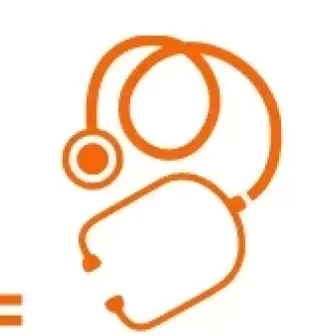
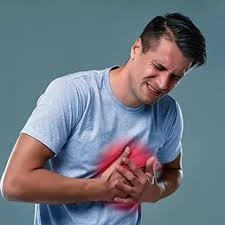
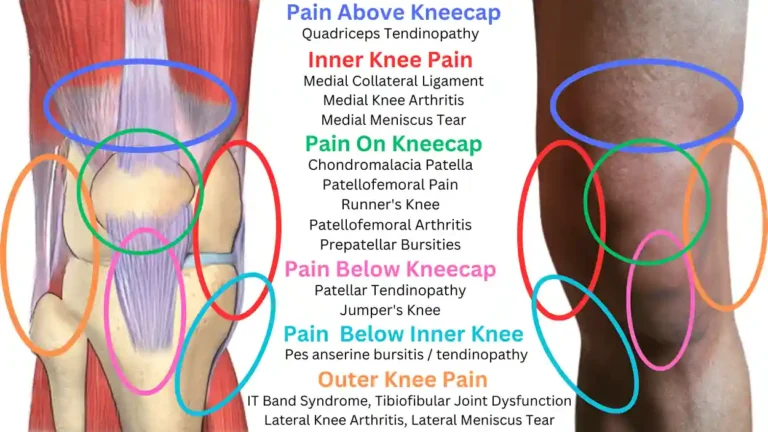

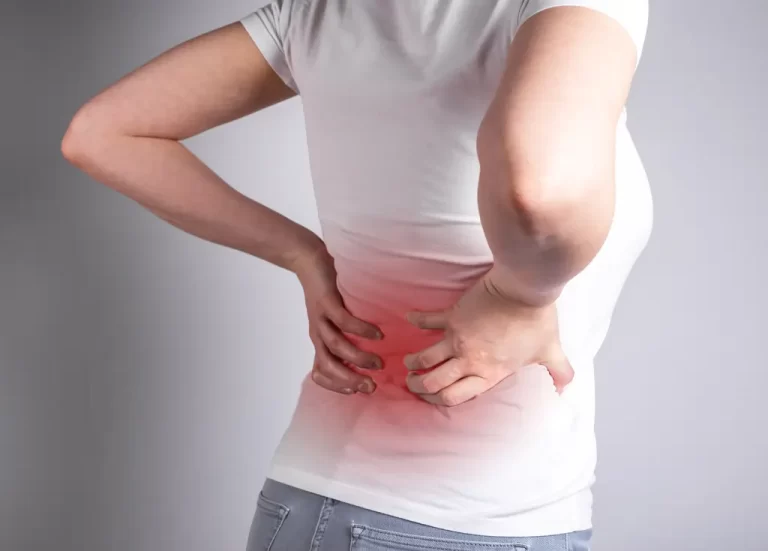
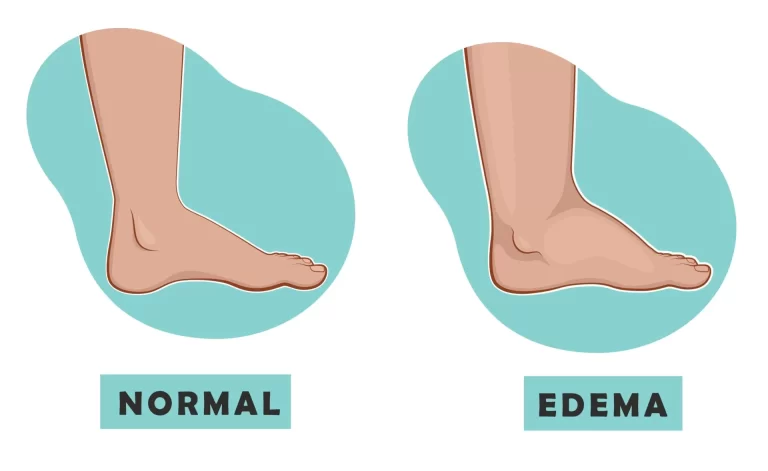
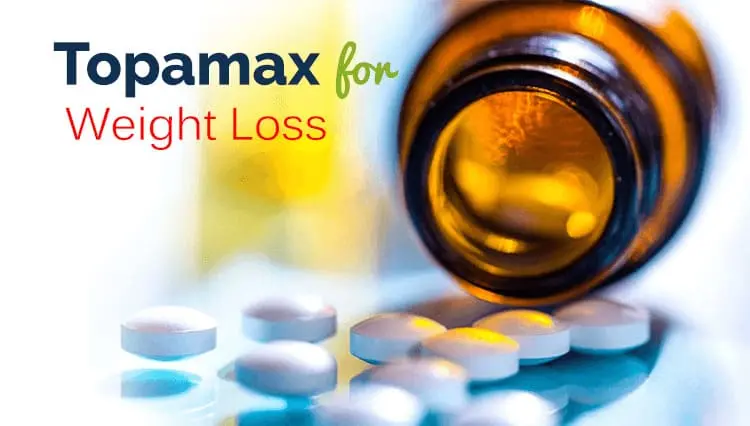
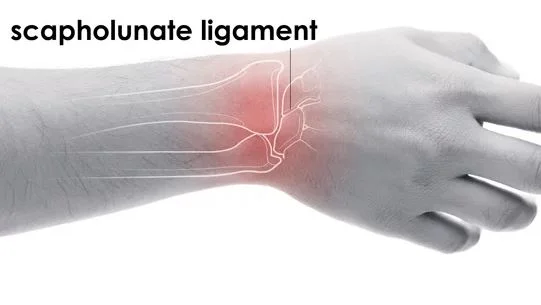
7 Comments